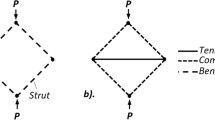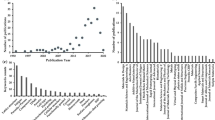Abstract
Additive manufacturing (AM) such as selective laser melting (SLM) enables the fabrication of complex lattice structures. These lattice structures are efficiently fabricated for a variety of applications, such as aerospace components and biomedical implants. The SLM process inherently introduces local temperature fields, resulting in local thermal defects, including porosity, partially fused particles, and dimensional errors. These defects introduce variation between the intended and manufactured geometries. This research provides an extensive experimental and numerical assessment of these geometric effects on individual lattice strut elements. These effects are quantified by systematic methods, allowing roughness of SLM lattice struts to be correlated with associated geometric control factors, i.e. length of strut, Ls, diameter of strut, Ds, and manufacturing inclination angle, α. Robust correlation is found between experimental and numerical data; resulting in a methodology for a priori prediction of thermally induced defects based on input geometry.























Similar content being viewed by others
References
Van Bael S et al (2011) Micro-CT-based improvement of geometrical and mechanical controllability of selective laser melted Ti6Al4V porous structures. Mater Sci Eng A 528(24):7423–7431
Yadroitsev I, Yadroitsava I, Bertrand P, Smurov I (2012) Factor analysis of selective laser melting process parameters and geometrical characteristics of synthesized single tracks. Rapid Prototyp J 18(3):201–208
Huang SH, Liu P, Mokasdar A, Hou L (2013) Additive manufacturing and its societal impact: a literature review. Int J Adv Manuf Technol 67(5–8):1191–1203
Yan C, Hao L, Hussein A, Young P, Raymont D (2014) Advanced lightweight 316L stainless steel cellular lattice structures fabricated via selective laser melting. Mater Des 55:533–541
Wauthle R, Vrancken B, Beynaerts B, Jorissen K, Schrooten J, Kruth JP, van Humbeeck J (2015) Effects of build orientation and heat treatment on the microstructure and mechanical properties of selective laser melted Ti6Al4V lattice structures. Addit Manuf 5:77–84
McMillan M, Leary M, Brandt M (2017) Computationally efficient finite difference method for metal additive manufacturing: a reduced-order DFAM tool applied to SLM. Mater Des 132:226–243
Yavari SA et al (2015) Relationship between unit cell type and porosity and the fatigue behavior of selective laser melted meta-biomaterials. J Mech Behav Biomed Mater 43:91–100
Lozanovski B, Leary M, Tran P, Shidid D, Qian M, Choong P, Brandt M (2019) Computational modelling of strut defects in SLM manufactured lattice structures. Mater Des 171: 107671
Campoli G, Borleffs MS, Amin Yavari S, Wauthle R, Weinans H, Zadpoor AA (2013) Mechanical properties of open-cell metallic biomaterials manufactured using additive manufacturing. Mater Des 49:957–965
Mullen L, Stamp RC, Brooks WK, Jones E, Sutcliffe CJ (2009) Selective laser melting: a regular unit cell approach for the manufacture of porous, titanium, bone in-growth constructs, suitable for orthopedic applications. J Biomed Mater Res B Appl Biomater 89b(2):325–334
Yan C, Hao L, Hussein A, Raymont D (2012) Evaluations of cellular lattice structures manufactured using selective laser melting. International Journal of Machine Tools and Manufacture 62:32-38
Yavari SA et al (2013) Fatigue behavior of porous biomaterials manufactured using selective laser melting. Mater Sci Eng C Mater Biol Appl 33(8):4849–4858
Townsend A et al (2016) Surface texture metrology for metal additive manufacturing: a review. Precis Eng 46:34–47
Pyka G, Kerckhofs G, Papantoniou I, Speirs M, Schrooten J, Wevers M (2013) Surface roughness and morphology customization of additive manufactured open porous Ti6Al4V structures. Materials 6(10):4737–4757
Mumtaz K, Hopkinson N (2009) Top surface and side roughness of Inconel 625 parts processed using selective laser melting. Rapid Prototyp J 15(2):96–103
DePond PJ, Guss G, Ly S, Calta NP, Deane D, Khairallah S, Matthews MJ (2018) In situ measurements of layer roughness during laser powder bed fusion additive manufacturing using low coherence scanning interferometry. Mater Des 154:347–359
Jamshidinia M, Kovacevic R (2015) The influence of heat accumulation on the surface roughness in powder-bed additive manufacturing. Surf Topogr Metrol Prop 3(1):014003
Cabanettes F, Joubert A, Chardon G, Dumas V, Rech J, Grosjean C, Dimkovski Z (2018) Topography of as built surfaces generated in metal additive manufacturing: a multi scale analysis from form to roughness. Precis Eng 52:249–265
Lou S, Jiang X, Sun W, Zeng W, Pagani L, Scott PJ (2019) Characterisation methods for powder bed fusion processed surface topography. Precis Eng 57:1–15
Lou S, Jiang X, Sun W, Zeng W, Pagani L, Scott PJ (2019) Characterisation methods for powder bed fusion processed surface topography. Precis Eng 57:1–15
Raja J, Muralikrishnan B, Fu S (2002) Recent advances in separation of roughness, waviness and form. Precis Eng 26(2):222–235
ISO (2011) ISO 16610-21 - Geometrical product specifications (GPS) — filtration — part 21: linear profile filters: Gaussian filters - first edition. ISO - International Organization for Standardization, Geneva
ISO, ISO 4288:1996 (1996) Geometrical product specifications (GPS) - surface texture, in profile method - rules and procedures for the assessment of surface texture. ISO - International Organization for Standardization, Geneva
King WE, Anderson AT, Ferencz RM, Hodge NE, Kamath C, Khairallah SA, Rubenchik AM (2015) Laser powder bed fusion additive manufacturing of metals; physics, computational, and materials challenges. Appl Phys Rev 2(4)
Roberts IA, Wang CJ, Esterlein R, Stanford M, Mynors DJ (2009) A three-dimensional finite element analysis of the temperature field during laser melting of metal powders in additive layer manufacturing. Int J Mach Tools Manuf 49(12–13):916–923
Gusarov AV, Yadroitsev I, Bertrand P, Smurov I (2007) Heat transfer modelling and stability analysis of selective laser melting. Appl Surf Sci 254(4):975–979
Welsch G, Boyer R, Collings E (1993) Materials properties handbook: titanium alloys. ASM International, Geauga County
Acknowledgements
This research was conducted by the Australian Research Council Industrial Transformation Training Centre in Additive Biomanufacturing (IC160100026) https://www.additivebiomanufacturing.org. The authors would like to acknowledge the support from RMIT's Centre for Additive Manufacturing.
Author information
Authors and Affiliations
Corresponding author
Additional information
Publisher’s note
Springer Nature remains neutral with regard to jurisdictional claims in published maps and institutional affiliations.
Rights and permissions
About this article
Cite this article
Alghamdi, A., Downing, D., McMillan, M. et al. Experimental and numerical assessment of surface roughness for Ti6Al4V lattice elements in selective laser melting. Int J Adv Manuf Technol 105, 1275–1293 (2019). https://doi.org/10.1007/s00170-019-04092-4
Received:
Accepted:
Published:
Issue Date:
DOI: https://doi.org/10.1007/s00170-019-04092-4




